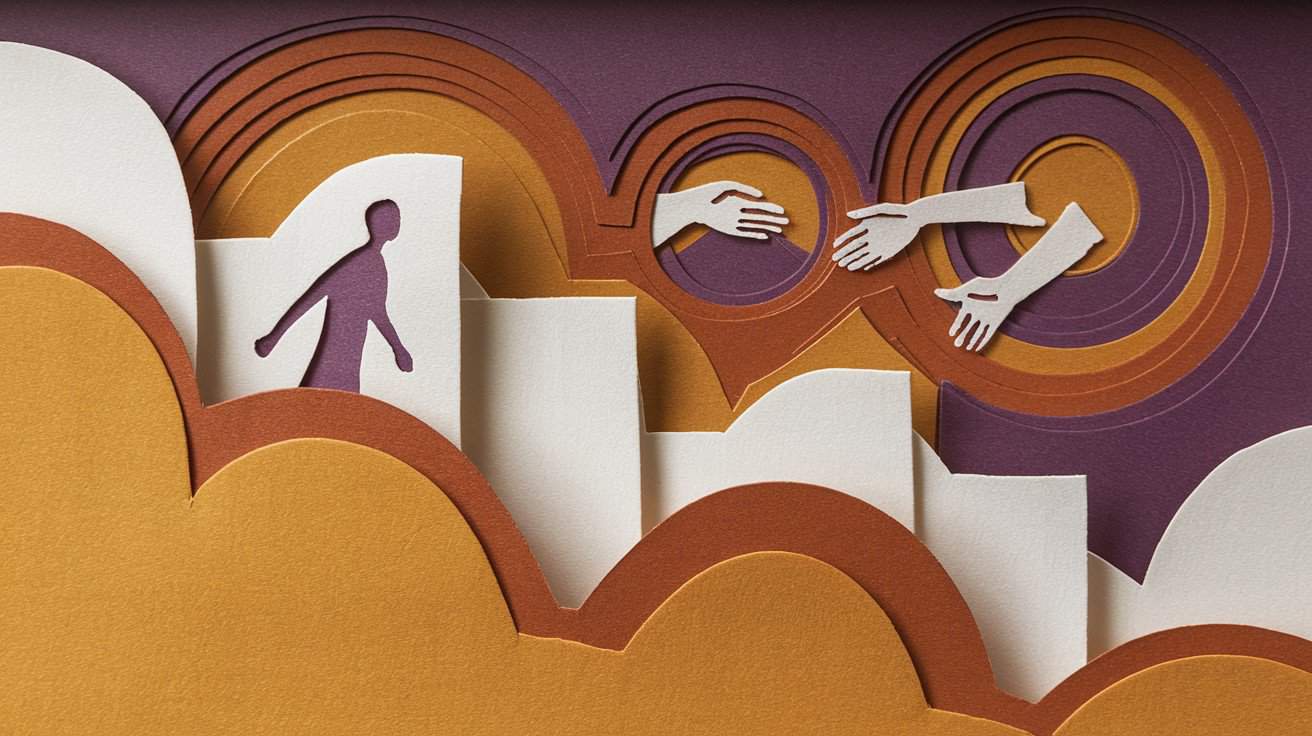I sit alone in my home office, staring at the walls that have become all too familiar. The silence is deafening. As someone who has experienced periods of prolonged isolation, I know firsthand how the walls can seem to close in, how time can blur, and how the physical and emotional weight of being alone can feel almost unbearable.
If you’re reading this, chances are you’ve felt it too – that deep ache of disconnection that goes beyond simple loneliness. Maybe you’re working remotely, living far from family, or going through a period of life transition. Whatever brought you here, know that you’re not alone in feeling alone.
Understanding the symptoms of prolonged isolation isn’t just about checking boxes on a list – it’s about recognizing when our natural need for human connection has been denied for too long. In this post, we’ll explore the hidden impact of isolation on both body and mind, and most importantly, discover paths back to meaningful connection.
The Physical Toll of Being Alone
Our bodies weren’t designed for isolation. Like a plant deprived of sunlight, we begin to show signs of strain when cut off from human connection. The physical symptoms can be subtle at first, but they build over time:
Your immune system may weaken, making you more susceptible to illness. Sleep becomes erratic – either too much or too little. Your heart might race for no apparent reason, and your muscles may feel tense and achy. Even your digestion can be affected, leading to changes in appetite and uncomfortable gut issues.
I remember when my own isolation peaked during a particularly intense work project. My shoulders carried a constant tension, my sleep schedule became chaotic, and headaches became my daily companion. These weren’t just random symptoms – they were my body’s way of crying out for connection. I realized that my struggles stemmed from the lack of support and camaraderie in my work environment. It became evident that without psychological safety in organizations, employees can easily slip into isolation, feeling as though their concerns and vulnerabilities are not valued. This experience taught me the importance of fostering genuine connections and creating spaces where individuals feel safe to express themselves.
The Emotional Warning Signs
The emotional impact of isolation can be even more profound than the physical symptoms. It’s like being stuck in a room where the lights are slowly dimming: The emotional impact of isolation can be even more profound than the physical symptoms. It’s like being stuck in a room where the lights are slowly dimming: at first, you can still make out shapes, but gradually everything blurs into a haze. As the shadows deepen, you may experience numerous mental breakdown symptom signs, such as feeling an overwhelming sense of loneliness or despair. This gradual erosion of one’s spirit can lead to an internal struggle, where hope feels increasingly out of reach.
Depression and anxiety often creep in gradually. You might find yourself losing interest in activities that once brought joy. Concentration becomes difficult, as if your thoughts are wrapped in fog. The world may start to feel increasingly overwhelming, while paradoxically, you might feel numb to it all. As these feelings deepen, everyday tasks can feel insurmountable, and isolation may set in, severing connections with friends and loved ones. Yet, there’s a flicker of hope that can emerge from the darkness: the realization that overcoming the mental prison is possible. With support and small steps towards self-care, it becomes feasible to rediscover joy and regain a sense of purpose in life. In these moments, daily tasks can feel monumental, and even the simplest decisions become sources of stress. Dealing with depression paralysis can leave you stuck in a cycle of inaction, where the desire to seek help battles against an overwhelming sense of hopelessness. As the days blend into one another, the yearning for relief grows, yet the energy to pursue it feels just out of reach. In moments like these, seeking help can feel daunting, yet it’s crucial to explore ways to regain a sense of control. Many individuals find solace in developing strategies for overcoming existential dread, which can involve grounding exercises, mindfulness practices, or simply talking to someone who understands. By acknowledging and addressing these feelings, you can begin to unravel the fog and rediscover the vibrant colors of life.
Time loses its meaning – days blend together, and maintaining a routine becomes challenging. You might notice yourself withdrawing further, even when opportunities for connection arise. It’s a painful cycle: the more isolated you become, the harder it feels to reach out.
Breaking Free from Isolation’s Grip
Here’s the truth that gives me hope: isolation’s hold on us isn’t permanent. Like a muscle that’s grown weak from disuse, our ability to connect can be strengthened again. The key is starting small and being gentle with ourselves:
Begin with tiny steps toward connection. This might mean sending a simple text to an old friend, joining an online community, or even just sitting in a public space for a few minutes. Each small action builds momentum.
Create structure in your day, even if you’re alone. Wake up at a consistent time, get dressed, and maintain basic self-care routines. These acts of self-respect lay the foundation for reconnecting with others.
Most importantly, remember that seeking help isn’t a sign of weakness – it’s an act of profound courage. Whether through therapy, support groups, or reaching out to loved ones, asking for support is a powerful first step toward healing.
The path back to connection isn’t always linear. There will be days when reaching out feels impossible, and that’s okay. What matters is that we keep trying, keep moving forward, even if it’s just one small step at a time.
You don’t have to let isolation define your story. Every human connection, no matter how small, is a victory worth celebrating. Whether you’re reading this from a quiet apartment, a busy household where you still feel alone, or anywhere in between, know that your need for connection is valid, and hope for change is always within reach.
What small step toward connection can you take today? Sometimes, simply acknowledging our loneliness is the first step toward healing. Share your thoughts in the comments below – your words might be exactly what someone else needs to hear right now.


